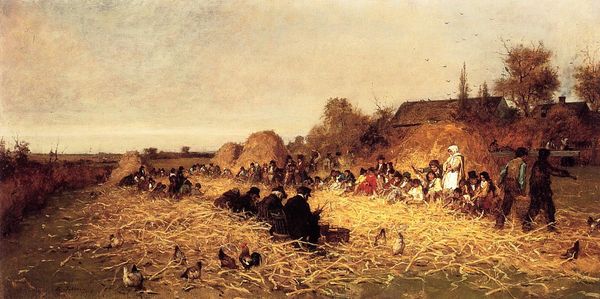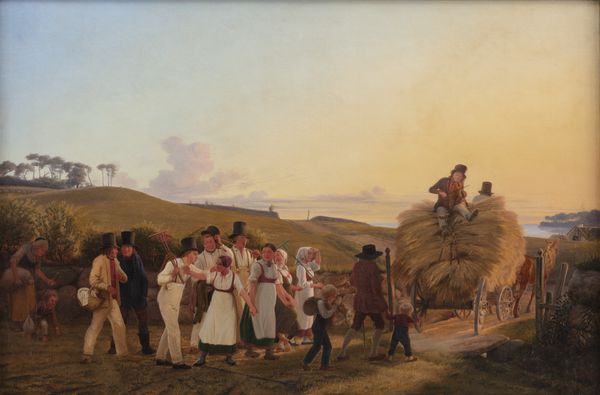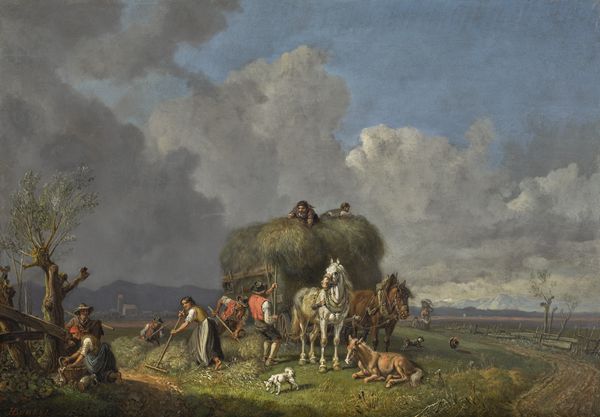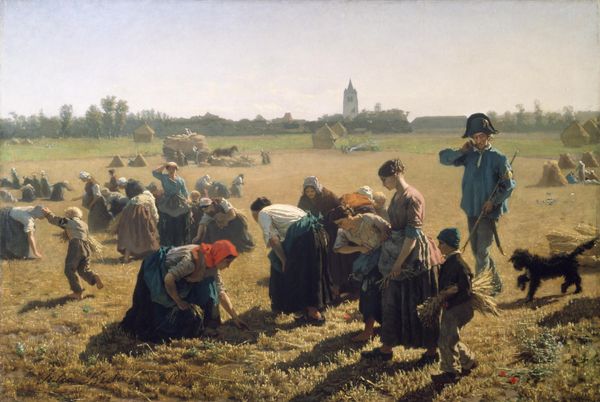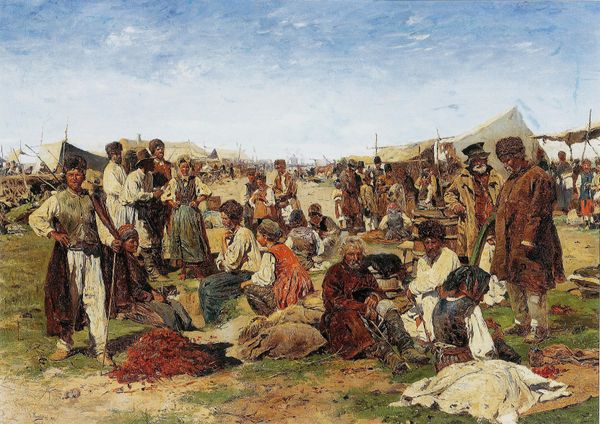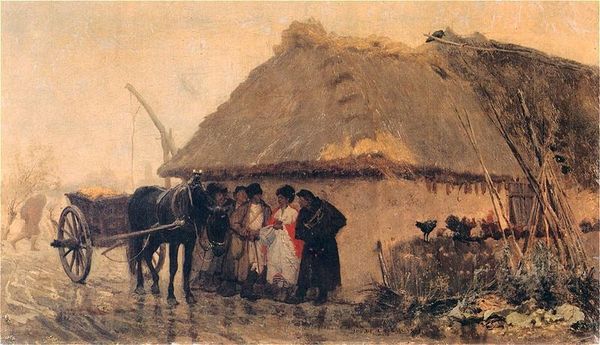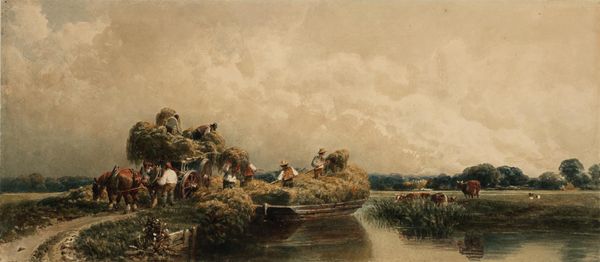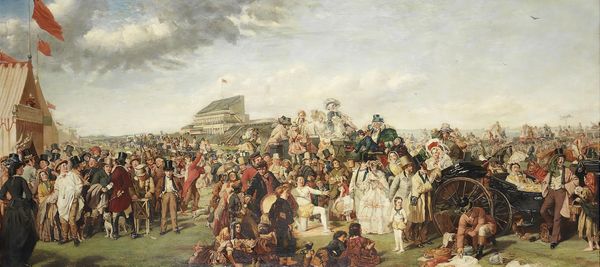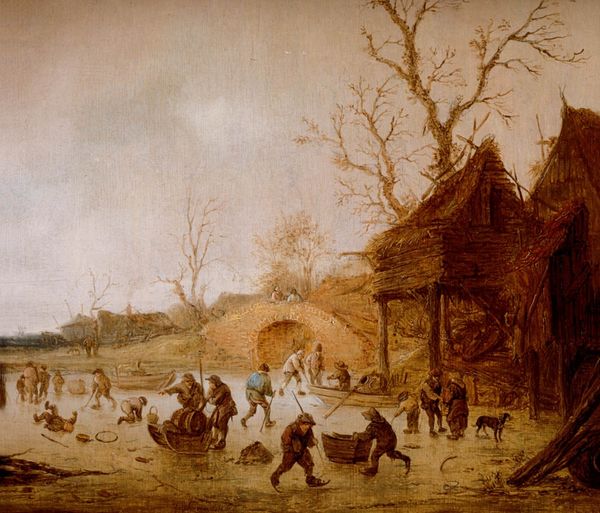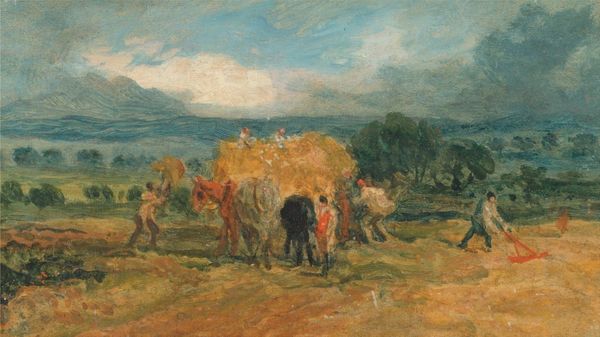
painting, plein-air, oil-paint
#
painting
#
impressionism
#
plein-air
#
oil-paint
#
landscape
#
painted
#
oil painting
#
genre-painting
#
realism
Copyright: Public Domain: Artvee
Curator: Immediately, I’m struck by the sheer number of figures, all huddled together within what seems like an ocean of corn husks. It has a strangely isolating feeling. Editor: Indeed. This is Eastman Johnson's "Corn Husking at Nantucket," painted around 1875. Johnson was known for depicting everyday American life, and here he presents us with a community gathering centered around the task of separating corn from its husks. The social and economic history behind this kind of scene is quite layered. Curator: Layers, yes, quite literally. I'm seeing such visual abundance. The landscape almost fades, consumed by this tactile foreground. Do you think Johnson uses the corn husks as a kind of symbolic anchor? Grounding the community? Editor: Absolutely, it's tempting to view the corn husks as a symbol of collective labor and interdependence. These events, often rooted in rural life, brought together neighbors for mutual support, blurring lines of race, class, and even gender, as all hands were needed. Of course, the idealization of such scenes often occludes the harsh realities of agricultural life, the social hierarchies that would certainly be in place, even during moments of relative camaraderie. Curator: Yes, it also obscures labor’s realities, almost transmuting repetitive actions into something ritualistic. Like an initiation? There’s such clear arrangement within the pictorial frame; do you get any sense of spatial order, though? Editor: There is a hierarchy on display. Notice the darker clothing versus the starker tones? It seems there's the possibility of depicting African Americans, who certainly participated in such tasks. And so, while it visually offers an impression of communal harmony, we should approach the image as the product of a society wrestling with profound inequalities, some even embedded within a very agricultural process of production. Curator: Precisely, perhaps the corn husks represent this collective identity – sheltering, almost concealing – but also creating distinct places, positions within the landscape of labor itself. Johnson asks: What symbols might we use to construct our notions of community, and what might these choices erase? It’s complicated work. Editor: Complicated indeed, particularly in Johnson’s hands. Thinking about "Corn Husking," considering the social fabric, is an enriching way of relating to the broader social, racial and political challenges we still negotiate today.
Comments
No comments
Be the first to comment and join the conversation on the ultimate creative platform.
